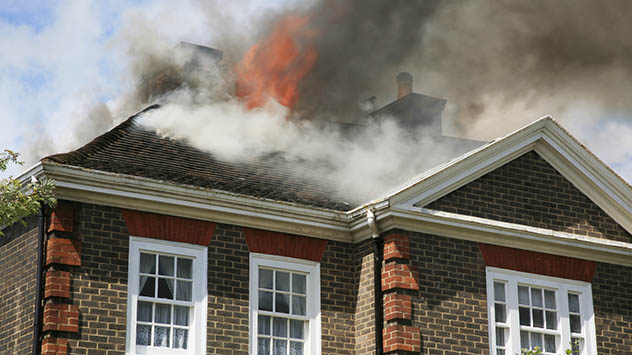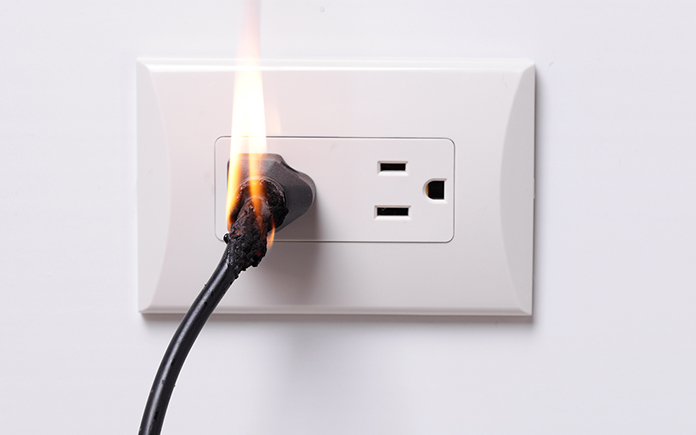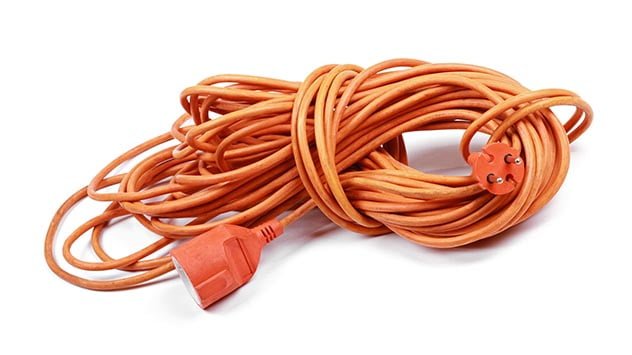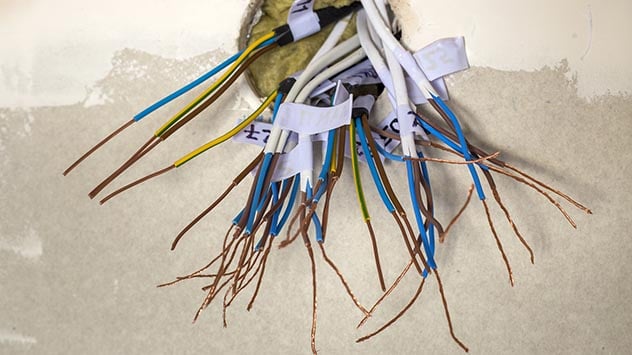
Electronic appliances, equipment and wiring keep our homes lit, cool and connected. But these same luxuries can create hazards and cause electrical fires, serious injuries and property damage.
Fires caused by electrical failure or malfunction are the third leading cause of accidental home structure fires, ranked just behind heating equipment and cooking-related blazes.
This should concern every homeowner because 79% of these fires spread beyond the source, claiming not just rooms, but entire homes and even neighbors’ homes.
The good news is most electrical fires are preventable — as long as you know what to look for and then do something about it.
Here are three hidden causes of electrical fires and how to prevent them.



1. Pinched Wires
An electrical cord on the floor may conflict with your home décor, but running it under a rug just removes one problem and creates another one.
People will walk on the hidden cord, causing it to bend and pinch. This reduces the cord’s ability to transfer current and wears down its insulation. And that creates a fire hazard.
But you don’t have to hide power cords to cause problems; wiring is easily damaged in everyday life.
Have you ever hung a picture? You might quickly designate a place for your latest masterpiece and forget that electrical wiring is behind drywall. And driving a nail without first examining the area could cause damage to wires and ignite a fire.
Have you ever moved furniture so you could vacuum? Well, moving a bedside table back to its original position afterward could result in a pinched lamp cord.
Even pets can cause damage, as cats and dogs often chew power cords, causing higher power discharge and overheating.
Your defense for each of these hazards is an arc-fault circuit interrupter.
AFCI outlets stop power when they detect hazards such as loose electrical connections and overheating.
Installing an AFCI in just one room covers the entire branch circuit, protecting people and property, and offering peace of mind.



2. Extension Cords
Not enough cord on your device? The easiest thing is to reach in the utility drawer for an extension cord.
These are convenient when connecting seasonal decorations such as Christmas lights, but extension cords should be a temporary fix — never a permanent solution.
Cost and convenience make extension cords seem desirable — compared to running new wiring through your home — but there are risks to consider.
For instance, extension cords are prone to overheating, and you should never run them through ceilings or walls.
Even when you use extension cords temporarily, dangers can occur. For instance, homeowners with no outdoor receptacles may run holiday lights through doors and windows, where they could be easily smashed, creating a fire hazard.
To stay safe, only use an extension cord with a three-prong plug that fits modern wall receptacles; ensure the cord’s label has a clearly printed certification or rating; and check the cord for exposed wiring. (You can repair your extension cord if it is damaged.)
If you’re relying too much on extension cords for everyday use, install some outlets as soon as possible, or hire an electrician to do so.



3. Unseen Dangers
Out of sight, out of mind, right? Wrong, when it comes to electricity!
Electrical equipment and wiring should always be top of mind, even when you can’t see them.
Take the wires in your attic, for instance. Never expose electrical connections; they belong in a junction box (or J box) at all times. This protects the connections, contains heat from loose wiring, and contains any sparks.
But electrical safety in the attic doesn’t end with a J box.
Here are some key safety tips:
- Don’t overload your attic’s outlets
- Leave nothing plugged in before you leave the attic.
- Hire a professional to regularly inspect your attic’s wiring
Follow these tips and you’ll prevent the most common house structure fire hazards.



